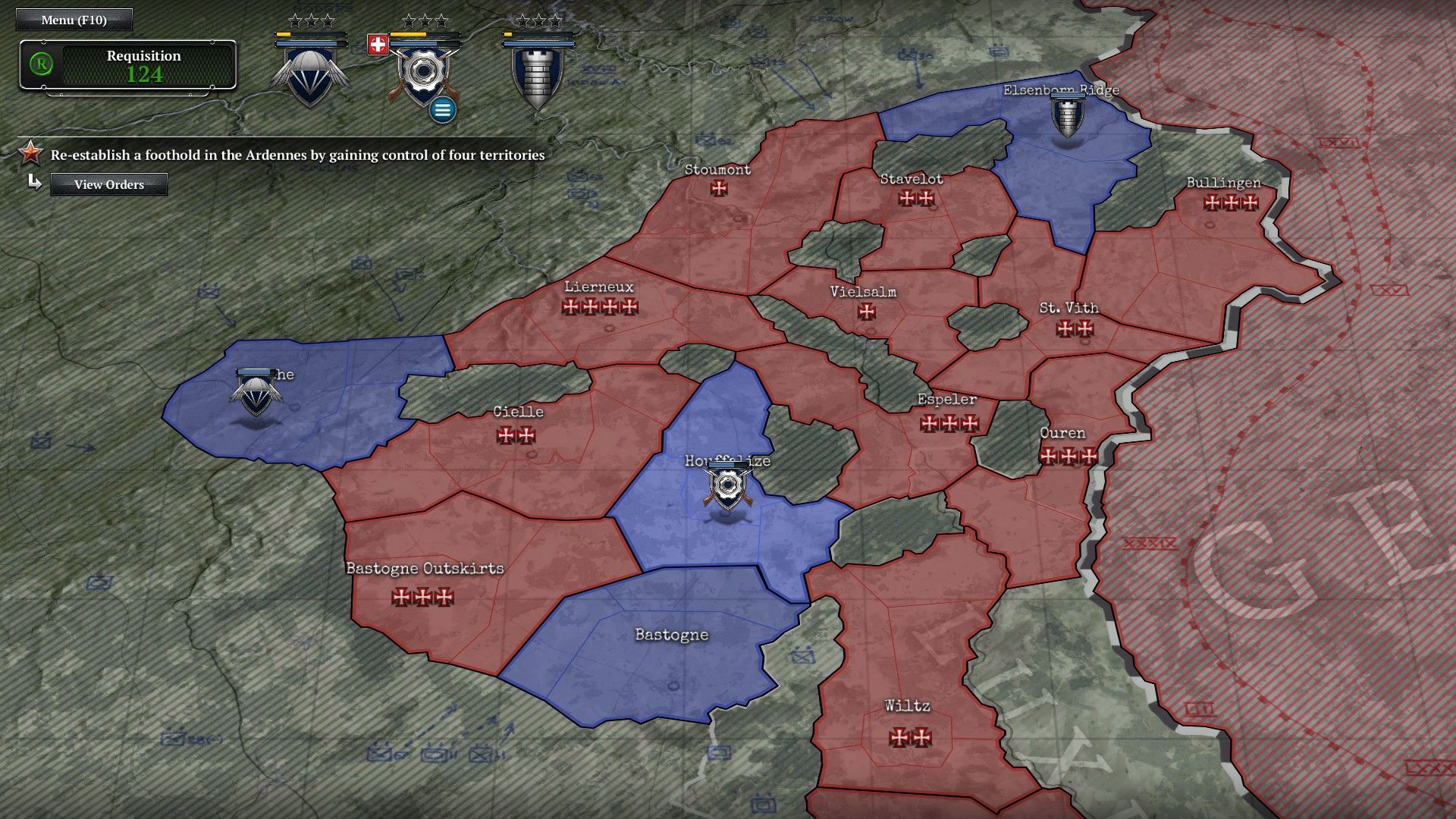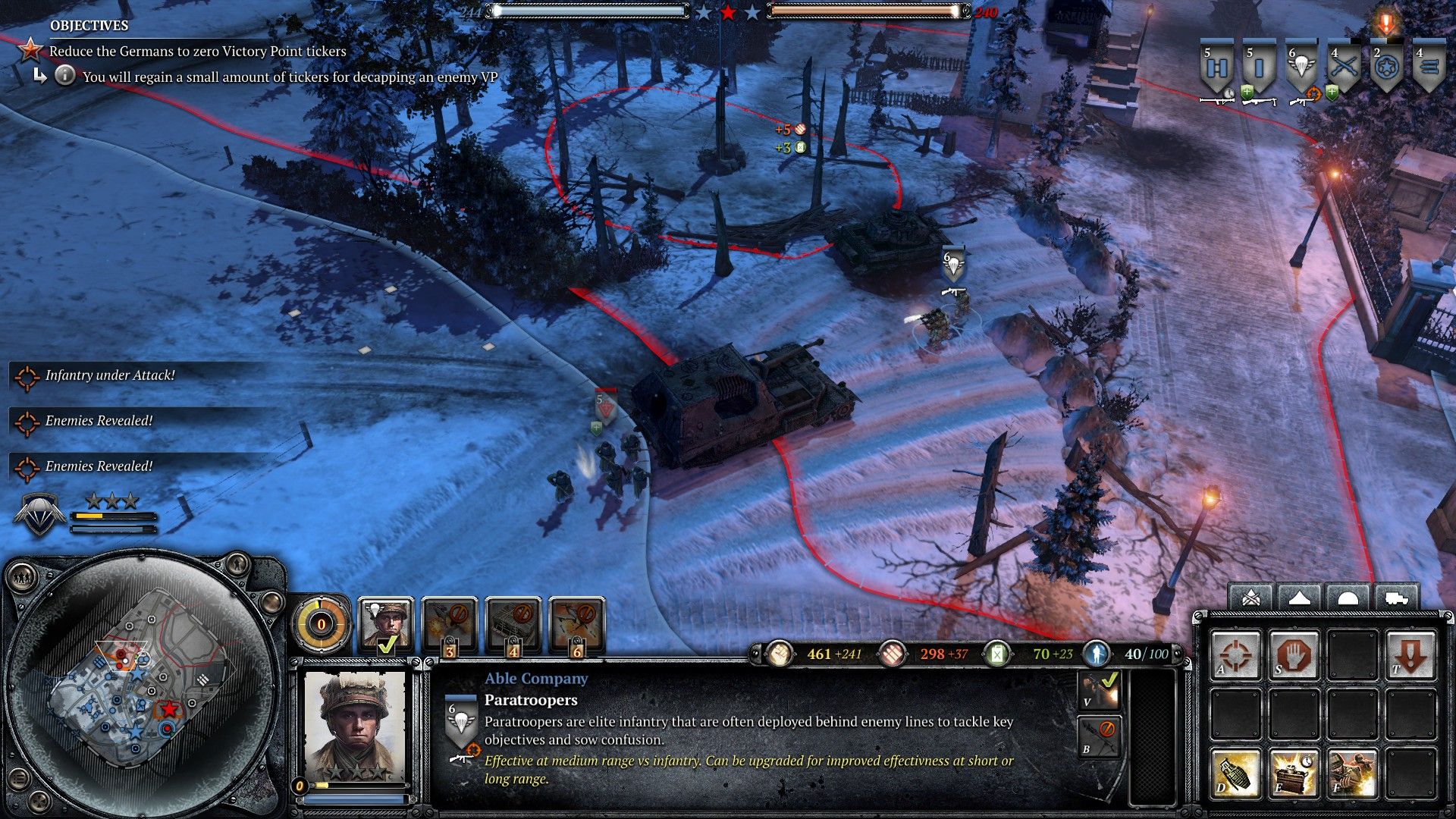

What's more, the Allied companies are apt to be exhausted from fighting at that point-reflected in the steady deterioration of what amounts to a stamina bar-leaving very little room for error. Such concentrations pose major problems in the latest stages of the campaign, as they give the CPU innumerable advantages-better equipment, veteran troops, and snipers among them.

As the campaign progresses, more and more ground shifts toward the Allies, but German forces also become increasingly concentrated as they are pushed to a few corners of the map. Its main conceit is a strategic map in which three companies-mechanized, support, and airborne-are moved around like pieces in a chess game, with the goal being to retake territory held by the Germans.

The second standalone expansion for Company of Heroes 2 following the multiplayer-focused Western Front Armies, Ardennes Assault is set over the six week period following Germany's surprise counteroffensive, which serves to set the campaign in motion. Frustrating at is can be at times, Ardennes Assault does a great job of capturing both the scale and the desperation of the Battle of the Bulge-the last ditch German counterattack that nearly broke the Allied advance in 1945. This time around, however, Relic has seen fit to widen the scope of the battle in a way that has rarely been seen in real-time strategy to this point and happily, it works. Such experiences have been Company of Heroes' bread and butter since the series' debut in 2006, and it is reflected well in Ardennes Assault-the latest expansion to grace Company of Heroes 2. I've never experienced combat firsthand, but Company of Heroes 2: Ardennes Assault is what I imagine war must be like: An intense, harrowing slog through broken buildings and shatteringly loud artillery fire with little to no margin for error.


 0 kommentar(er)
0 kommentar(er)
